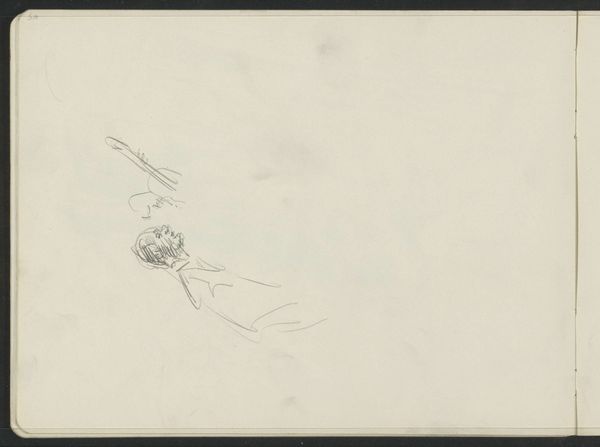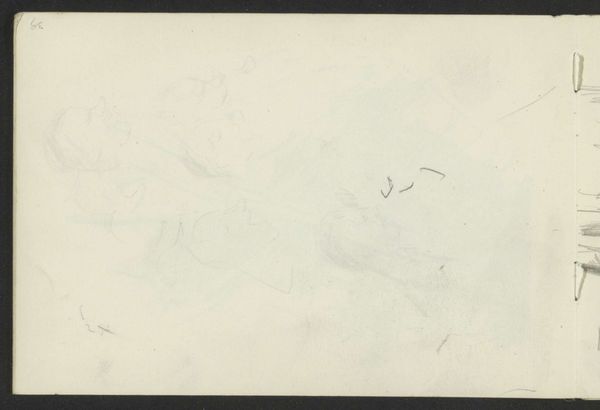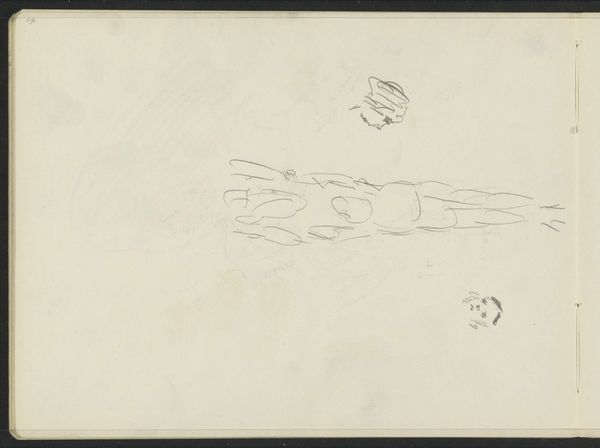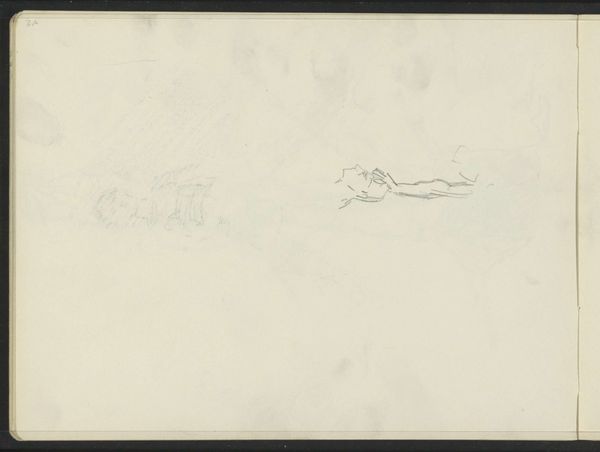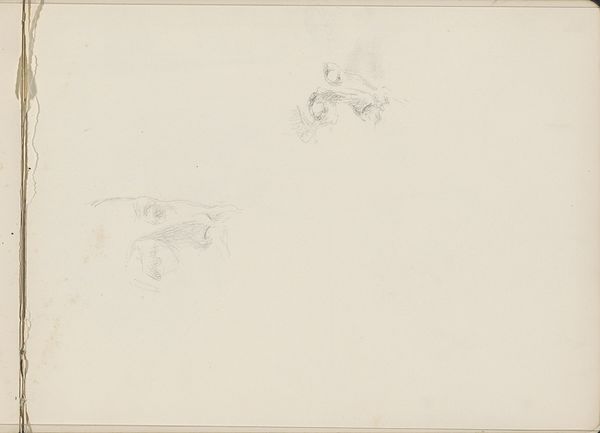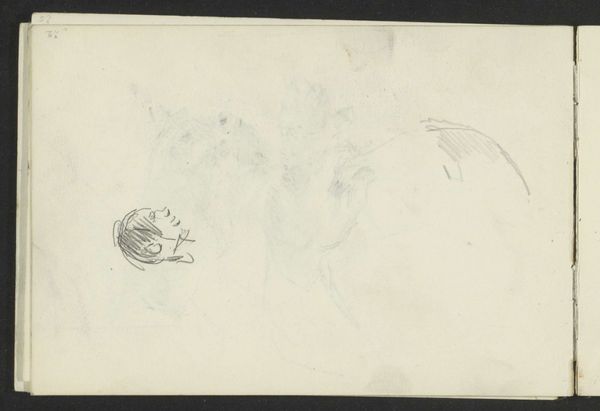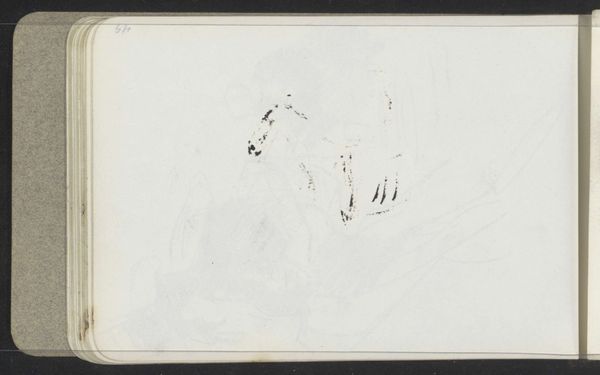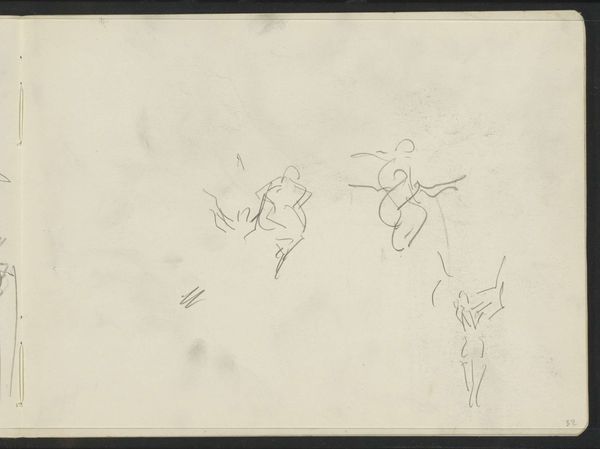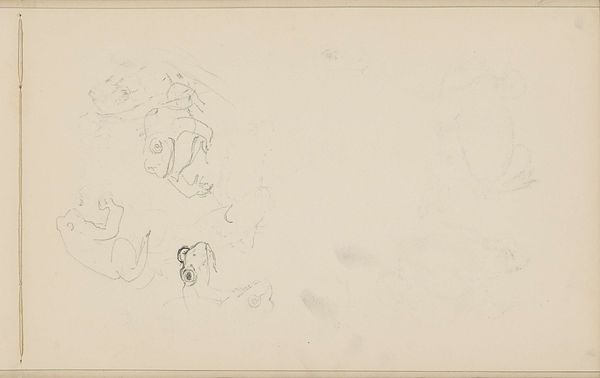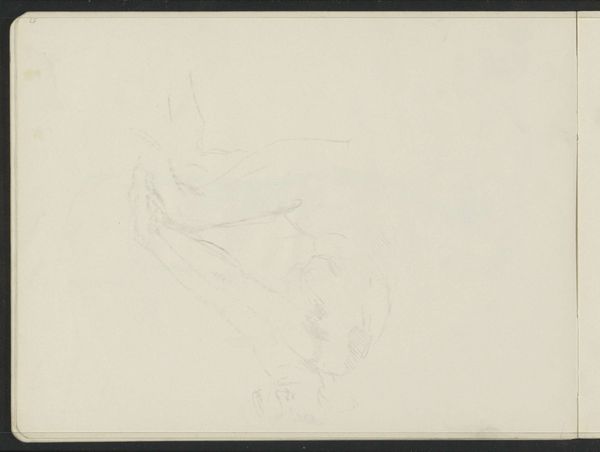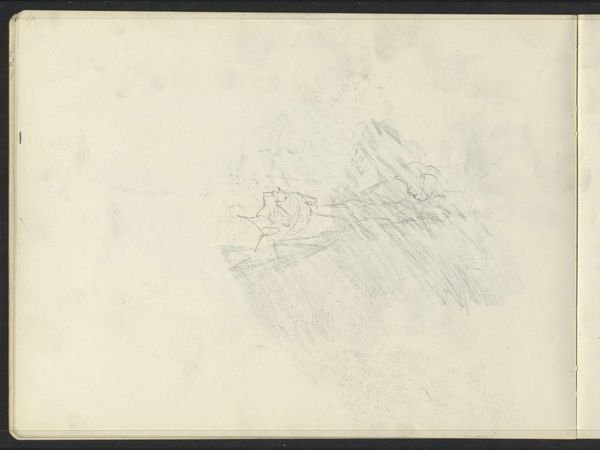
Copyright: Rijks Museum: Open Domain
Editor: This drawing, "Neus en ogen, mogelijk van een vrouw" – that’s "Nose and eyes, possibly of a woman" – is by Isaac Israels and likely made sometime between 1875 and 1934. It's just a pencil drawing, very sparse and unfinished. What's most striking to me is how ephemeral it feels, almost like a fleeting thought. What can you tell me about it? Curator: Consider the materiality of the drawing itself. Israels chose a humble pencil and readily available paper. It’s a far cry from the oil paints and prepared canvases we might associate with ‘high art’ of the period. This drawing suggests a deliberate shift, perhaps questioning those established artistic hierarchies and the labour that went into them. Editor: So, you're saying the *way* he made it, the materials he chose, challenges some notions about art? Curator: Precisely. We might ask what the access to pencils and paper tells us about Israels’ practice? Was this a preparatory sketch? Or could the choice of medium represent a conscious rejection of the established art market, favouring readily accessible materials and more immediate mark-making? How might this immediacy affect the representation itself, of a possible woman's face, of fleeting moments in time? Editor: It’s interesting to think of this drawing not just as a quick sketch, but as a deliberate statement about artistic production. It is a little like a snapshot, raw and unprocessed, far from laboured painting practices and carefully finished works. Curator: Exactly. Think about the broader societal context – the rise of mass production, the availability of materials, and Israels’ role within that economy. It pushes us to think beyond the surface representation and consider the means of production. What impact did industrialization have on this shift of raw to produced materials? Editor: I never really thought about the social impact in that sense, focusing mostly on the figures in this portrait. It adds a whole new layer to my understanding of Israels' intentions and to the whole Impressionist movement actually. Curator: Indeed. It highlights that the 'impression' itself is partly an outcome of both labour and materials.
Comments
No comments
Be the first to comment and join the conversation on the ultimate creative platform.
